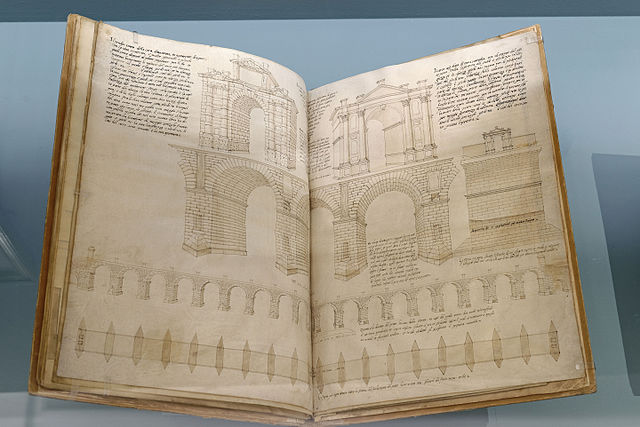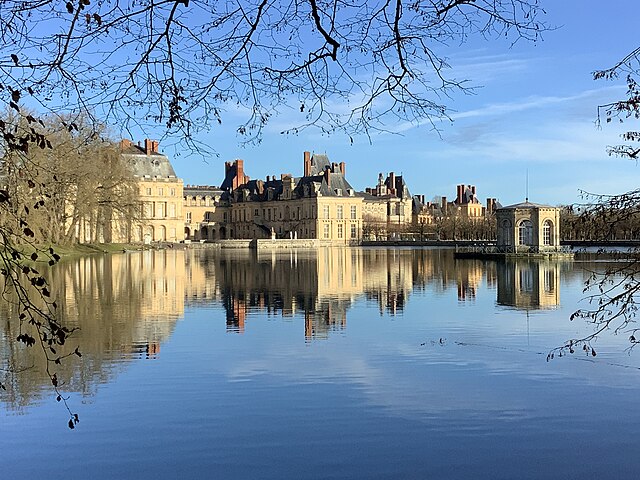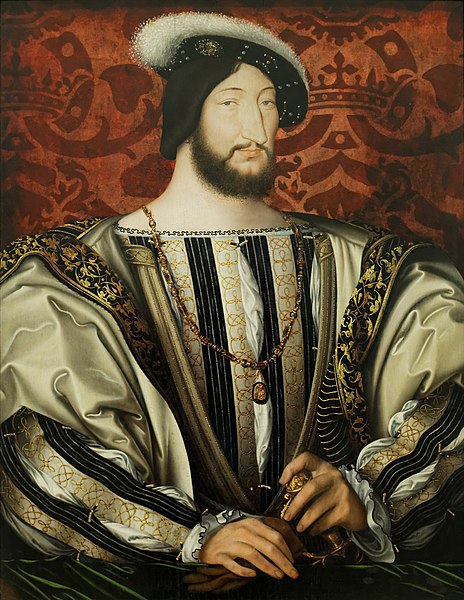Sebastiano Serlio was an Italian Mannerist architect, who was part of the Italian team building the Palace of Fontainebleau. Serlio helped canonize the classical orders of architecture in his influential treatise variously known as I sette libri dell'architettura or Tutte l'opere d'architettura et prospetiva.
Fanciful Portrait of Sebastiano Serlio (Print by Vincenzo Raggio)
Serlio's model of a church façade of 1537 crystallized a format that lasted into the 18th century.
A page from the seventh book
Two pages from the eighth book
Palace of Fontainebleau, located 55 kilometers southeast of the center of Paris, in the commune of Fontainebleau, is one of the largest French royal châteaux. It served as a hunting lodge and summer residence for many of the French monarchs, beginning with Louis VII. Francis I, Henry II, Louis-Philippe, Napoleon Bonaparte and Napoleon III. Though the monarchs only resided there for a few months of the year, they gradually transformed it into a genuine palace, filled with art and decoration. It became a national museum in 1927 and was designated a UNESCO World Heritage Site in 1981 for its unique architecture and historical importance.
Château de Fontainebleau
Fontaine Belle-Eau, the spring which gave its name to Fontainebleau
Francis I, first major builder of the Chateau
The original horseshoe staircase by Philibert de l'Orme in the Courtyard of Cheval Blanc (1559)








